Compare similar ETFs
 S&P 500 Equal Weight ETF
RSP
S&P 500 Equal Weight ETF
RSP
 Core S&P 500 ETF
IVV
Core S&P 500 ETF
IVV
 Core U.S. Aggregate Bond ETF
AGG
Core U.S. Aggregate Bond ETF
AGG
 Core S&P Total U.S. Stock Market ETF
ITOT
Core S&P Total U.S. Stock Market ETF
ITOT
 S&P 500 Equal Weight ETF
RSP
S&P 500 Equal Weight ETF
RSP
 Core S&P 500 ETF
IVV
Core S&P 500 ETF
IVV
 Core U.S. Aggregate Bond ETF
AGG
Core U.S. Aggregate Bond ETF
AGG
 Core S&P Total U.S. Stock Market ETF
ITOT
Core S&P Total U.S. Stock Market ETF
ITOT
| Market Cap The market value of the company. It's calculated by multiplying the share price by the number of outstanding shares. | $105 Billion | |
| Dividend Yield Yearly payout to shareholders per share. The percentage indicates the payout in relation to the share price. | 1.97 % | |
| Beta Indicates the relationship between the price performance of a share and the market. | 0.9857 | |
| P/E Ratio Ratio between share price and earnings per share. A low ratio could indicate that the stock is undervalued or investors aren't expecting high growth. A high ratio could indicate that the stock is overvalued or investors are expecting high growth. | 34.38 | |
| Negative P/E Ratio a negative P/E ratio shows that the company is not profitable, and it shows how many years it would take the company to lose its entire market capitalisation if it did not change anything | -691.13 | |
| Profitable Companies | 94 | |
| PEG The ratio between the P/E ratio and the growth rate of the company's earnings per share in the last twelve months. A lower PEG could mean that a stock is undervalued. | 592.74 | |
| Price to Sales Ratio Market cap divided by the revenue in the most recent year. | 5.07 | |
| Price to Book Ratio Price to Book Ratio is the Market cap divided by the Book value of the company | 5.16 |
| Enterprise Value to EBIT Enterprise Value divided by EBIT | 92.67 | |
| Enterprise Value to Revenue Enterprise value divided by revenue | 3.44 | |
| Total Debt to Enterprise Value Total debt divided by enterprise value | 0.21 | |
| Debt to Equity A higher ratio indicates a higher risk. However, the ratio is difficult to compare between industries where common amounts of debt vary. | NaN | |
| Profit Margin Net income divided by revenue of the last 4 quarters. It indicates the company's profitability. | 13.79% | |
| Quarterly Earnings Growth (YoY) The rate at which the company's net income has increased to the same quarter one year ago. | - | |
| Return on Equity Equity divided by market cap. | 132.02% | |
| Return on Assets Indicates a company's profitability in relation to its total assets. | 56.90% | |
| Return on Invested Capital Return on invested capital (ROIC) is net income after dividends divided by the sum of debt and equity. It shows how effective a company is at turning capital invested by shareholders and other debtholders into profits. | 76.08% |
| Finance | 18.7% |
| Technology | 17.9% |
| Industrials | 12.4% |
| Consumer Discretionary | 10.8% |
| Healthcare | 9.8% |
| Consumer Staples | 6.9% |
| Utilities | 5.7% |
| Energy | 4.7% |
| Materials | 4.3% |
| Other | 2.4% |
| Telecommunications | 2.0% |
| Real Estate | 1.2% |
| N/A | 3.1% |
| Micro Cap | 2% |
| Small Cap | 0% |
| Mid Cap | 6% |
| Large Cap | 83% |
| Mega Cap | 9% |
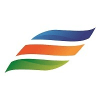
CEG
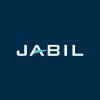
JBL - Manufacturing
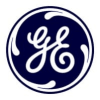
GE - Manufacturing

AVGOP - Manufacturing

MMM - Management of Companies and Enterprises

TPR - Manufacturing

DRI - Accommodation and Food Services

GL - Finance and Insurance

VST - Utilities

FFIV - Professional, Scientific, and Technical Services
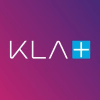
KLAC - Manufacturing

PLTR - Information

DVA - Health Care and Social Assistance

MTCH - Information

C - Finance and Insurance

BSX - Manufacturing

DFS - Finance and Insurance
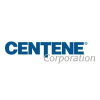
CNC - Finance and Insurance

EQT - Mining, Quarrying, and Oil and Gas Extraction
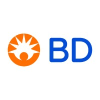
BDX - Manufacturing

ABT - Manufacturing

TMO - Professional, Scientific, and Technical Services

CDW - Wholesale Trade